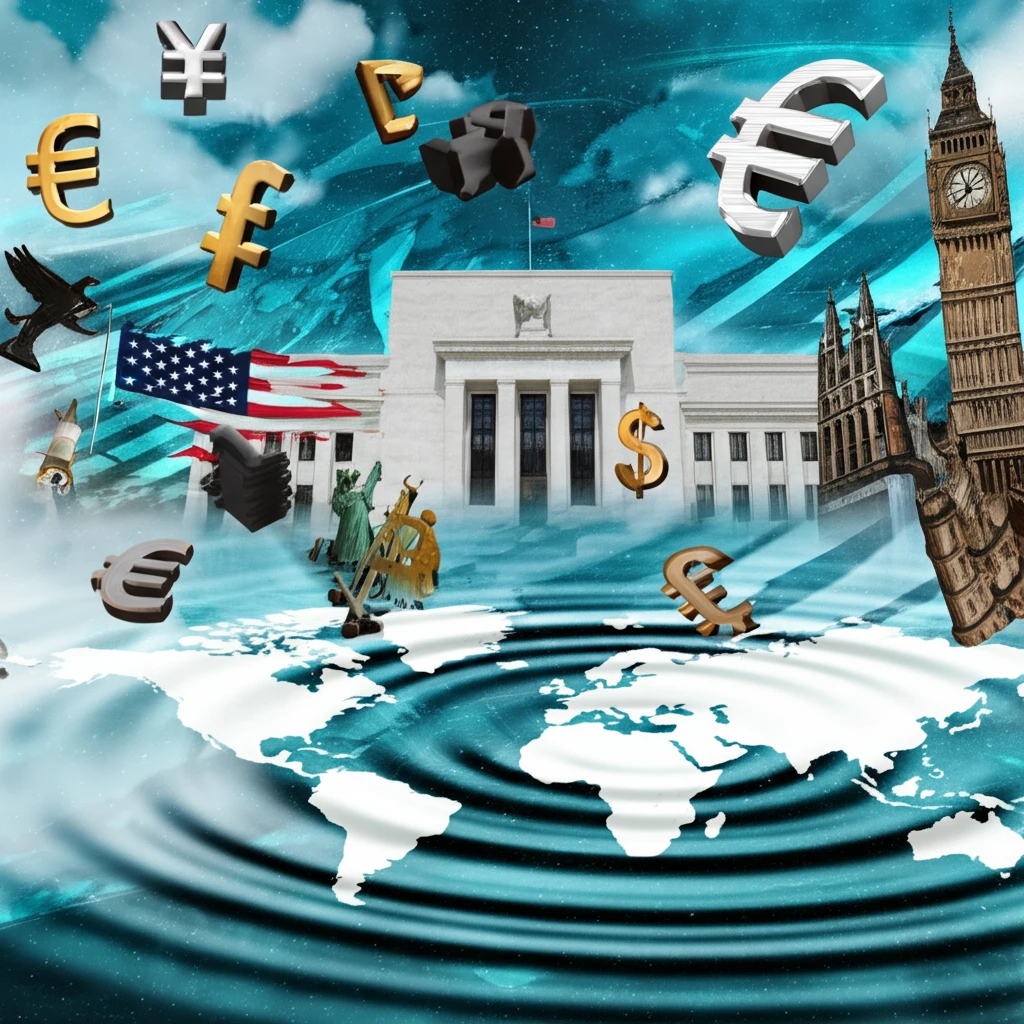
Decoding the Fed's Impact: How US Monetary Policy Ripples Through Global Markets
"A look into the intricate ways that US monetary policy decisions impact emerging economies, and what it means for investors and policymakers."
In today's interconnected global economy, the decisions made by the U.S. Federal Reserve (the Fed) have repercussions that extend far beyond America's borders. When the Fed tightens its monetary policy—typically by raising interest rates to combat inflation—the effects ripple through financial markets worldwide, particularly impacting emerging economies. Understanding these dynamics is crucial for investors, policymakers, and anyone keen on grasping the complexities of international finance.
Emerging markets often face unique challenges when the Fed changes course. A rising U.S. dollar, driven by higher interest rates, can destabilize local currencies, increase borrowing costs, and trigger capital outflows. Central banks in these countries must then navigate a difficult balancing act: defending their currencies without stifling economic growth. This balancing act becomes even more complicated when uncertainty about future monetary policy looms.
Recent research sheds light on the multifaceted ways that U.S. monetary policy affects emerging markets, distinguishing between direct and indirect effects. By examining these dynamics, we can better understand the vulnerabilities and potential opportunities that arise in an ever-changing global financial landscape.
The Fed's Tightening Grip: Direct vs. Indirect Impacts

One of the key findings from recent studies is the distinction between direct and indirect impacts of U.S. monetary policy. Direct impacts occur through trade and financial linkages: as the U.S. raises interest rates, it can directly reduce demand for goods and services from emerging markets. Simultaneously, a stronger dollar makes U.S. imports cheaper, potentially hurting the competitiveness of emerging market exports.
- Trade Channel: Higher U.S. interest rates can decrease demand for goods from emerging markets.
- Financial Channel: Increased rates attract capital to the U.S., reducing investment in emerging markets.
- Interconnectedness: Effects on major economies indirectly impact emerging markets.
Navigating the Uncertainties: Policy Implications
The research underscores several important policy implications for both the Fed and emerging market economies. Firstly, it highlights the need for the Fed to carefully consider the global spillover effects of its monetary policy decisions. Ignoring these effects could lead to over-tightening, harming both the U.S. and global economies. Secondly, clear and transparent communication about the Fed's future policy path is crucial to minimize uncertainty and prevent unnecessary market volatility. Finally, emerging market economies need to strengthen their resilience to external shocks by improving macroeconomic management, diversifying their economies, and building strong financial buffers. In an era of increasing global interconnectedness, understanding and managing the spillover effects of monetary policy is essential for maintaining stability and promoting sustainable economic growth.
